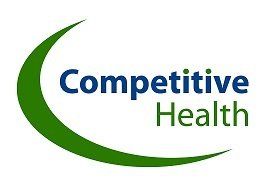Income Protection
Income Protection
Income Protection
This type of plan is designed to pay a regular sum to replace lost income. When purchased privately it is known as an Income Protection Policy (IPP) or Permanent Health Insurance (PHI). Loss of income can occur when someone cannot work as a result of sickness or injury. It is not usual for PHI plans to include a death benefit although unit linked plans can provide a small amount of life cover.
PHI plans insure an individual’s health rather than their life. Whereas critical illness plans pay a capital sum on the occurrence of certain specified medical conditions, PHI plans pay the income benefit following any illness or injury that is not specifically excluded.
The period of protection normally lasts for the client’s working life and finishes at age 60 or 65, i.e. they are not whole of life plans.
Even though only a proportion of someone’s income can be protected (e.g. 60%), the sums of money involved for policies in payment over a number of years often amount to far more than the total of conventional life assurance.
There are a vast number of illnesses and injuries, which prevent people from working. Complaints, which would not result in a claim on a critical illness or life assurance plan, (stress and bad backs for example) could result in a claim on a PHI plan.
Definition of Disability
Each PHI provider has its own definition, but a typical wording might be “the claimant must”:
-have been in gainful employment at the start of the illness or disability,
-show that they can do no part of their job because of the illness or disability, and
-not be carrying on any occupation (whether paid or not).
More Info
Other Limits
It is usual for life companies to provide only a level of benefit which, when added to certain State benefits will produce an income of not more than 60 – 65% of the client’s pre-disability income. If they provided more than this there might be little incentive for the client to return to work! Income benefits usually cease when the client returns to work or recovers from the disability.
Deferred Periods
To avoid the administration and claims costs which would result from short term illness, it is normal for there to be a minimum period where no claim will be paid. Typically, deferred periods are defined in numbers of months and the minimum period is one month. A range of deferred periods is generally offered for example one, three, six and 12 months. The risk to the life provider is lower where the client selects a longer deferred period and the contribution for a given level of income benefit will also be lower. However, it is more important that clients select the deferred period that best meets their needs.
Occupation Groups
The most important factor in determining the level of risk to the insurer is the individual’s occupation. Different types of work are grouped according to their level of risk. At one extreme are the purely clerical occupations that involve no heavy manual work or the handling of hazardous materials or machinery. At the other extremes are the occupations that are so hazardous that applicants are declined PHI protection. Premiums are heavily influenced by the applicant’s occupation.
Taxation
For individually owned PHI plans, the benefits are payable tax-free.
Advice
We can advise and recommend on an appropriate level of cover to suit an individual’s circumstances. Our very experienced insurance brokerage service compares all available plans from across the whole market from all possible providers to ensure the best possible plan is selected for a client’s needs.
Competitive Health is an appointed representative of Healthnet Services Limited which is authorised and regulated by the Financial Conduct Authority, reg. no. 312313. Registered address: Healthnet Services Limited, County Gates House, 300 Poole Road, Poole, Dorset BH12 1AZ. Registration number: 4620230
© 2024
Competitive Health
